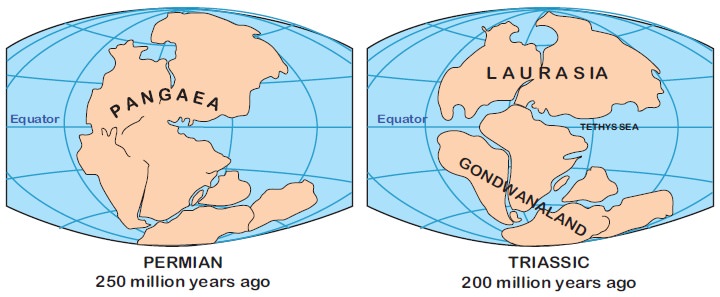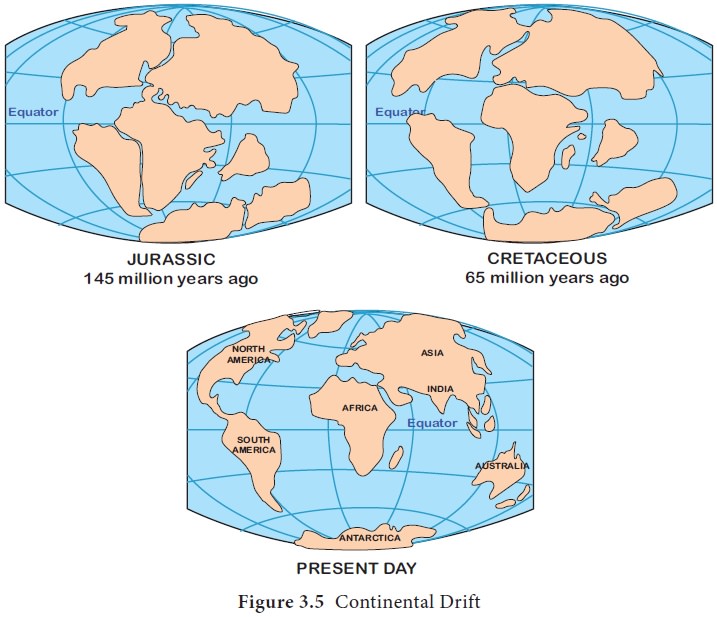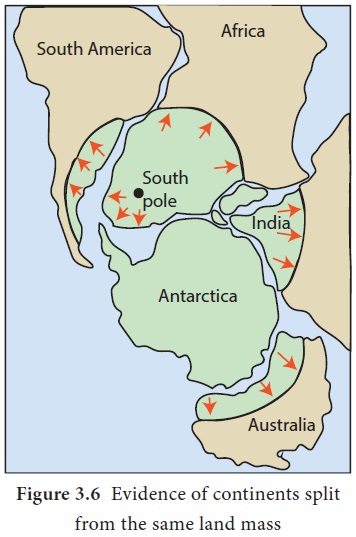Geography - Continental Drift Theory | 11th Geography : Chapter 3 : Lithosphere: Endogenic Processes
Chapter: 11th Geography : Chapter 3 : Lithosphere: Endogenic Processes
Continental Drift Theory
Continental
Drift Theory
In 1912 Alfred Wegener (1880-1930) postulated that
all the continents once were together forming a single continent. According to
him, about 250 million years ago, the earth was made up of a single landmass
called Pangaea (meaning "all
lands"), and a single ocean surrounding it called as Panthalassa. Over a
long period of time, probably 220 million years ago, they drifted apart and
gradually moved to form their present position. First, Pangaea broke into two
landmasses namely Laurasia in the north and Gondwana in the south.
Laurasia further split into Eurasia and North
America. Gondwana land split into Africa, South America, Antarctica, Australia,
and India.
Wegener put forward certain evidences to support
the continental drift theory. Let us deal with it in detail.


Evidences to support continental drift theory
The continental drift theory is supported by the
following evidences.
·
Certain
identical rare fossils have been found in different continents.
·
The
fossils of Mesosaurus (a small Permian reptile), for example, have been found
only in Africa and South America.
·
The
fossil of a Fern tree, about 360 million year old, has been found only in India
and Antarctica.
·
Rocks
of similar type, formation, and age have been found in Africa and Brazil.
·
Geological
structure in Newfoundland matches with that of Ireland, Scotland and
Scandinavia. Geological Structure of Appalachian Mountains matches with Morocco
and Algeria in North Africa.
· The corresponding edges of the continents fit together. For example, the western side of Africa and the eastern side of South America fit together.

Related Topics